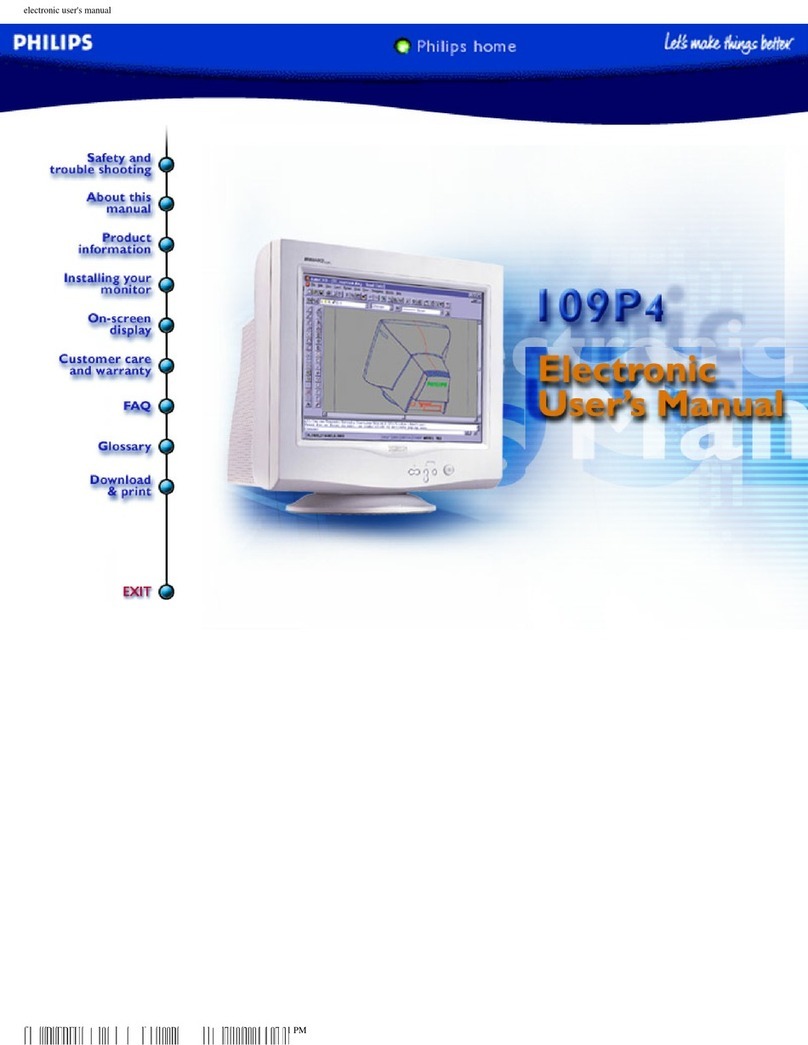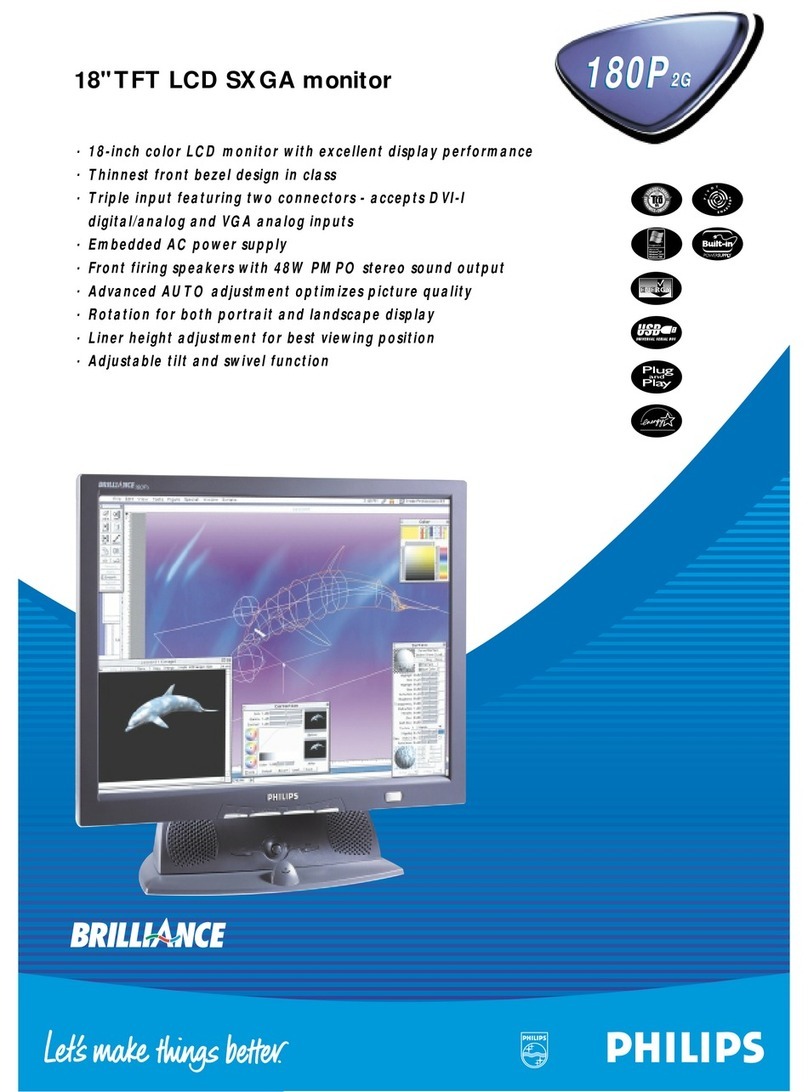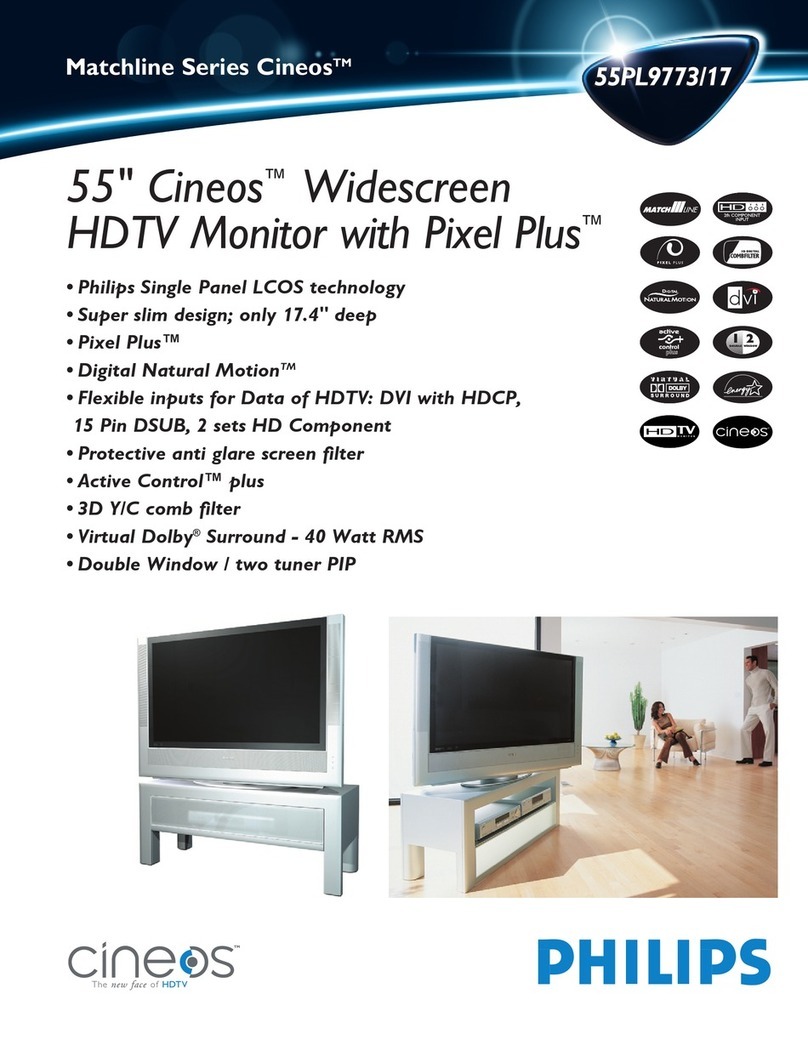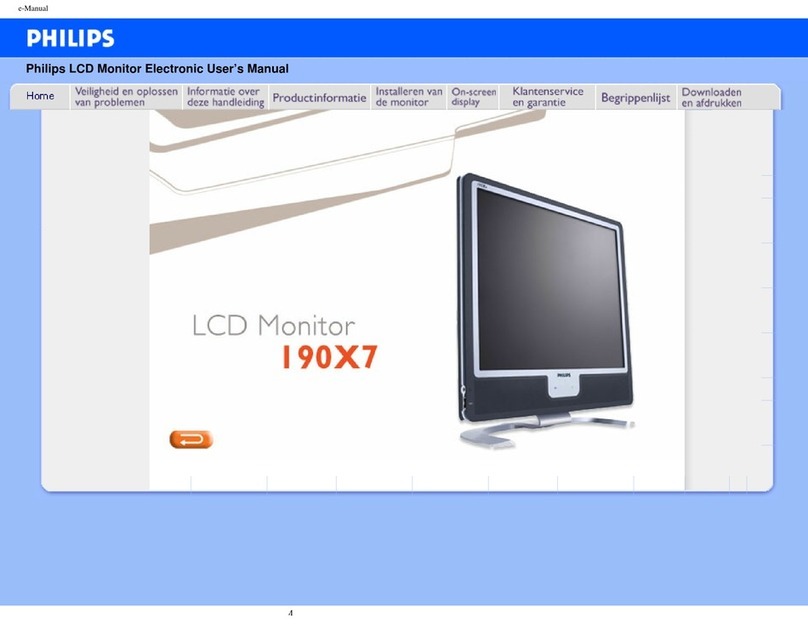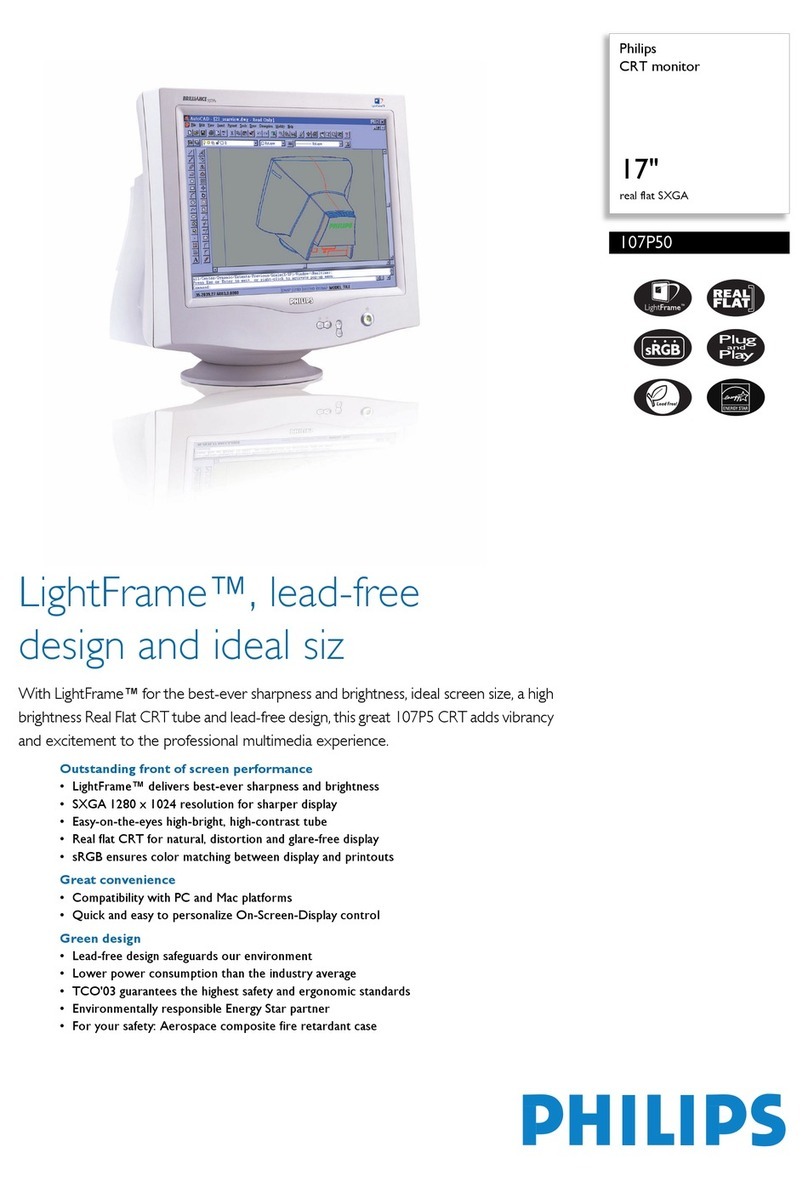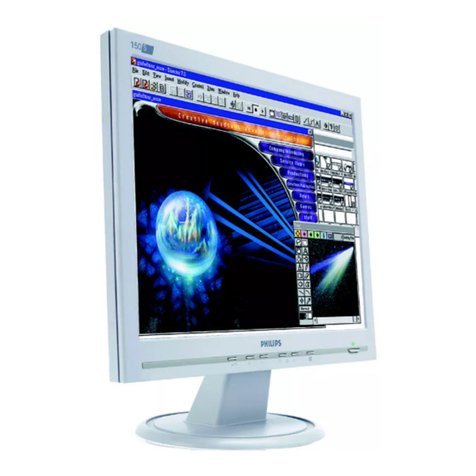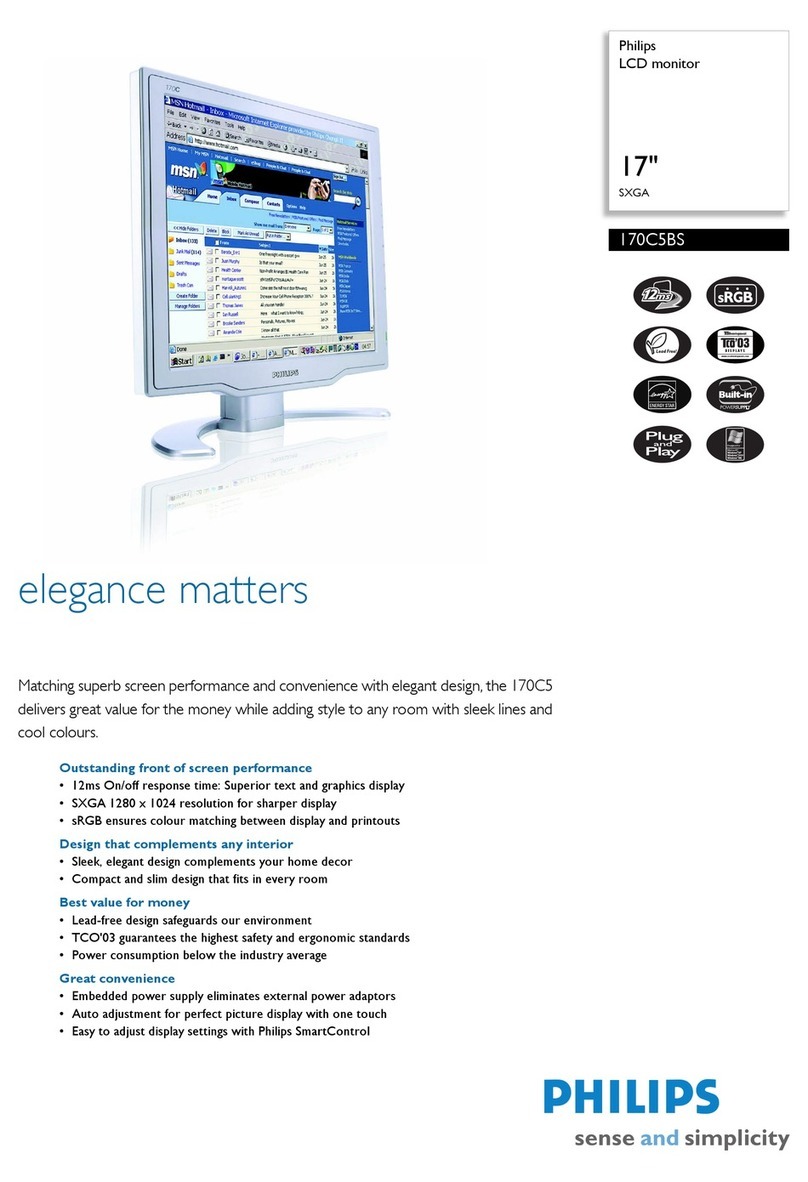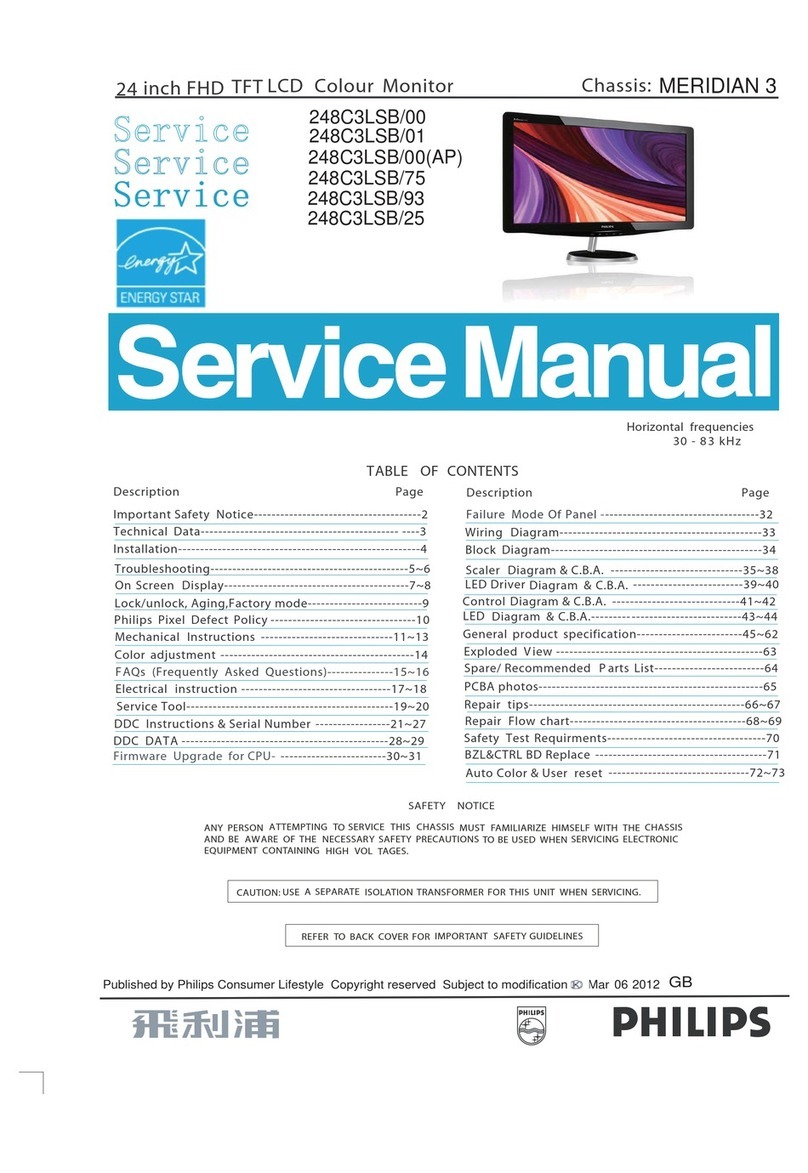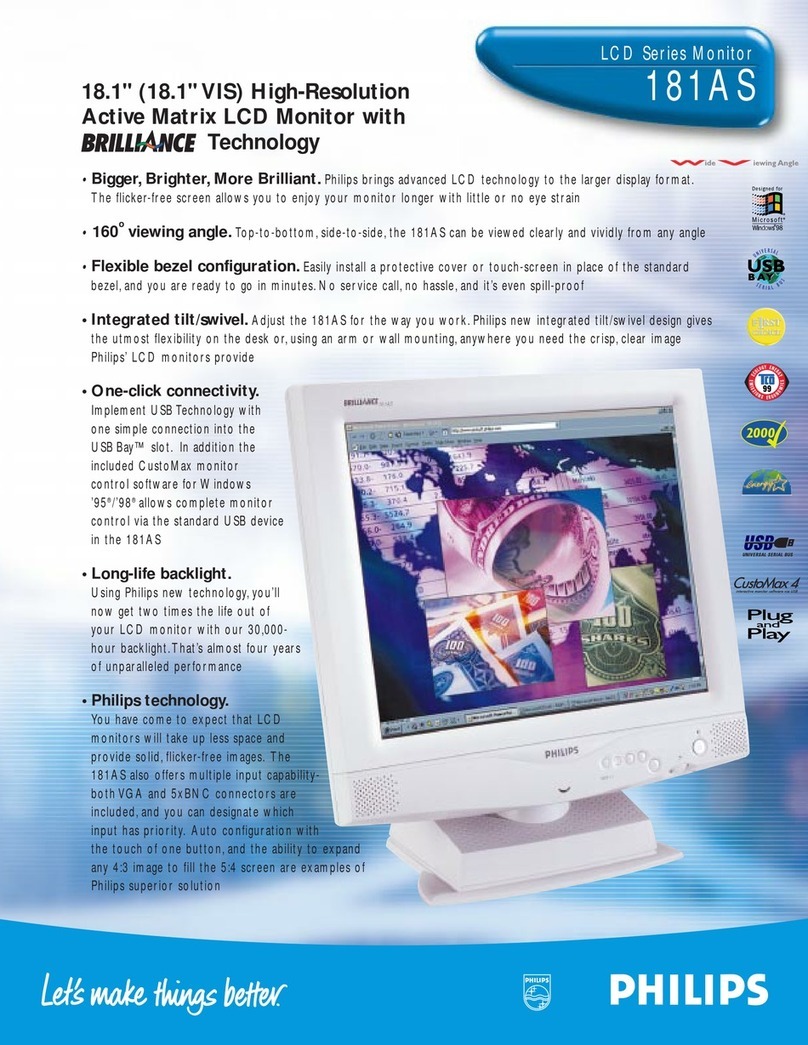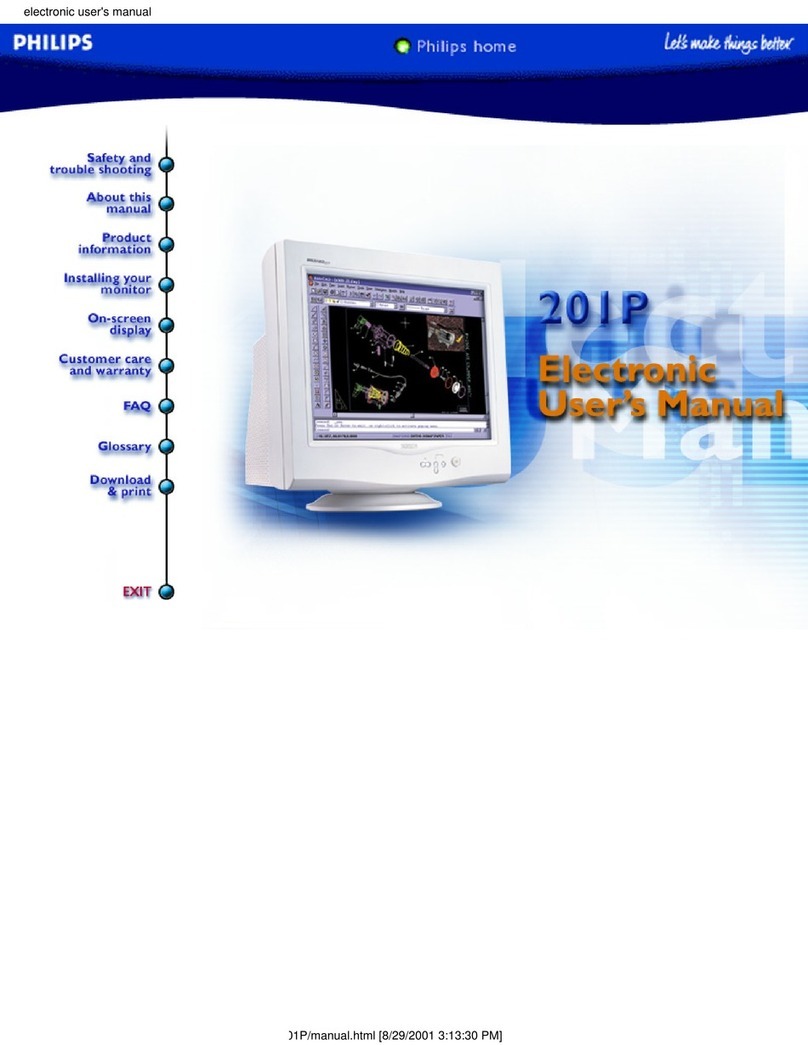
Table
of
Contents
Part
I:
Monitor
Operations
1
Monitor
Overview
...cccccccosncscsessceserescnsssssssessssensesseesceseessssesecensssnscnsseosssseeee
Lod
1.1
Block
Diagram..........sccssssssssecsssssssssenssenscnssnonecssensasencocsnsssensaseosenseses
1-1
1.2
Monitor
Specifications
........sscssscsssspsessscssscnssnsenssssenseessenensenssenecences
1-3
2
Power
Supply
&
Degauss
Circuitry
......cc.sccnsssssnsecsnsscsssssnesssnscensosensveseee
S71
2.1
Power
Supply
.........sccoscscsssorsrssessessecessnssssenssessncsssncsssnssssncersneesnssnesess
2-1
2.2
CHOPPED
......snssccsscsscscecsssceserssesesessnessnsssanessnecensssessnnsnsseucssnesasecusenseanes
2-3
2.3
Degaussing
Circuit
......ccsscsscssrssssenssnssseseneseossscecsncsnssesseesens
sapnruren
2-6
3
Deflection
Board
.......c.scsscccecscsssesseessnssnssssssssessesssessessnscnssvesseseesensenssnesensee
J”
3.1
Horizontal
Deflection
...........sssscssssssssesscsscssscsescsenenensncnsenecscsssnsensess
3-1
3.2
ET
Stabilization
Circiiit
.........ssccscsssscscrsssssescsssrsesercerssenssnenonses
wee
7D
3.3
Vertical
Deflection
...........cssssscssssscssssssscsecsssesessensasenerensseeensecsnserseees
3-4
3.4
Auxiliary
Services
......scssscscsssssessnesesssnsssnsssnsensenssssonssossssseceneeanerneees
3-4
4
Video
Preamplifier
Board
......ssscssssssssssrsssenesenesssenssessncenssnsensensssecsosenees
4-1
4.1
Video
Preamplifiers..........scscsersssecsecseees
wuic
bia
sundae
Gatpesasispaanunisats
4-1
4.2
Synchronization
........csssscessersssessscssenceeesnssersnssencssstensarensnssernenssnsencnssees
4-2
5
Video
Output
Stages
(Socket
Board)
.......rcccsssscssecssscsecsssssnenscsesseseoneneee
5-1
5.1
Fimal
Video
Stage
.......s.sscsssssssssssscerecssssssessnsesensnenssecececsescescssanesrensnese
5-1
5.2
Black
Level
Adjustment
and
Individual
Beam
Limiting.............
5-1
5.3.
Flashover
Protection
.........0+s+0
svoscecaeananencnnennennsenncssnssssnnnnnneneecngte
5-1
6
Dynamic
Focus
Board
....-.-.serscsssscscssesccssereencencsessceresees
wee
21
Part
II:
Adjustment
Procedures
7
Equipment
Needed
for
Adjustments
.......cccessocsrsscsrssesesesenesnencanensenseoes
7-1
S
Synchromization
.........ccscscssrssenesecsceressovsresssserssqnenenensevassesensnsssssenansevecsorese
8-1
Q
EHT
Stabilization
.........cscssscscscssrsccsesnccerssensssserscsncensensosconsonsscsensccseesnsonses
9-1
10
Geometry
......ccsccccscccsseseresnseseneseessrnssserenssosssenesessessoeseesesneacansesacaesnsnssoooeees
10-1
11
Chromaticity
..........ccccscsecccscerssererecesersonosonsncoessssenessssesecnsecsssrecesssonsnononeaes
11-1
12
Focus
NOE
ATT
ST
ARAN
LE
RN
ICES
ETE
ETON
TOE
13
Troubleshooting
.....cc..csecccsssssseeccsssossssssssesersseseesssnesenssssnsecnsssanessnscseeseseseee
LI~
1
13.1
OWOTVIEW
ccscasccceccacsccecsonsesseacassccssveseossseosasncscansnnseasesseessentinssanssecsnscoss
13-1
13D
TMGICATOTS
vcosivcesssensdnnsschicicaricpesebcaselecace
ewes
tnnedanseedchishadesnesennnsaesoutered
13-1
Appendix
A:
Monitor
Diagrams
.......s--ssesssssessnssressenensssersenensseenenrensansnssosecsenses
A-1
Appendix
B:
Layout
Diagrams...
sinbstheatedsnsiaaaustaabeaiebennesteneeseiovcctabasectatarensuene
B-1
